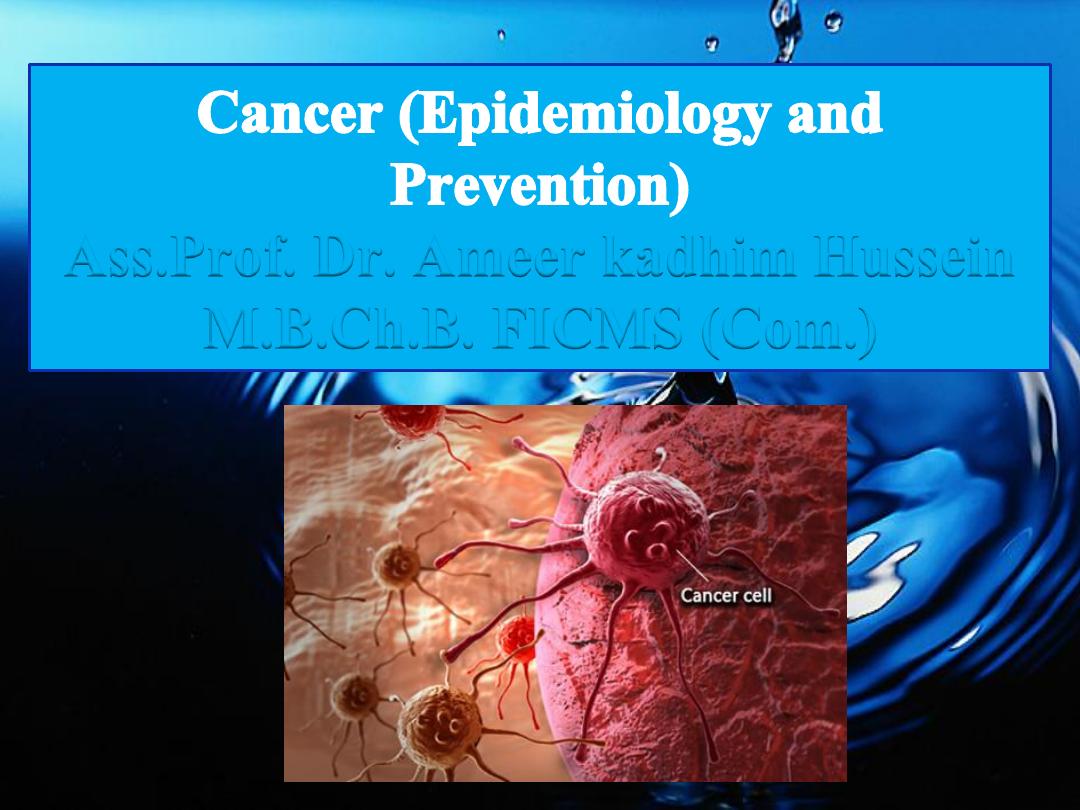
Ass.Prof. Dr. Ameer kadhim Hussein
M.B.Ch.B. FICMS (Com.)

Introduction
Cancer is a generic term for a large group of
diseases that can affect any part of the body. Other
terms used are tumors and neoplasms. One
defining feature of cancer is the rapid creation of
abnormal cells that grow beyond their usual
boundaries, and which can then invade adjoining
parts of the body and spread to other organs, the
latter process is referred to as metastasizing.
Metastases are a major cause of death from
cancer.

Epidemiology
Cancer is the second leading cause of death globally, and is
responsible for an estimated 9.6 million deaths in 2018. Globally,
about 1 in 6 deaths is due to cancer.
Approximately 70% of deaths from cancer occur in low- and
middle-income countries.
Around one third of deaths from cancer are due to the 5 leading
behavioral and dietary risks: high body mass index, low fruit and
vegetable intake, lack of physical activity, tobacco use, and
alcohol use.
Tobacco use is the most important risk factor for cancer and is
responsible for approximately 22% of cancer deaths.

Epidemiology
Cancer causing infections, such as hepatitis and human papilloma virus (HPV),
are responsible for up to 25% of cancer cases in low- and middle-income
countries.
Late-stage presentation and inaccessible diagnosis and treatment are common.
In 2017, only 26% of low-income countries reported having pathology
services generally available in the public sector.
More than 90% of high-income countries reported treatment services are
available compared to less than 30% of low-income countries.
The economic impact of cancer is significant and is increasing. The total
annual economic cost of cancer in 2010 was estimated at approximately US$
1.16 trillion.
Only 1 in 5 low- and middle-income countries have the necessary data to drive
cancer policy.

Epidemiology
Cancer is a leading cause of death worldwide, accounting for an estimated
9.6 million deaths in 2018. The most common cancers are:
Lung (2.09 million cases)
Breast (2.09 million cases)
Colorectal (1.80 million cases)
Prostate (1.28 million cases)
Skin cancer (non-melanoma) (1.04 million cases)
Stomach (1.03 million cases)
The most common causes of cancer death are cancers of:
Lung (1.76 million deaths)
Colorectal (862 000 deaths)
Stomach (783 000 deaths)
Liver (782 000 deaths)
Breast (627 000 deaths)
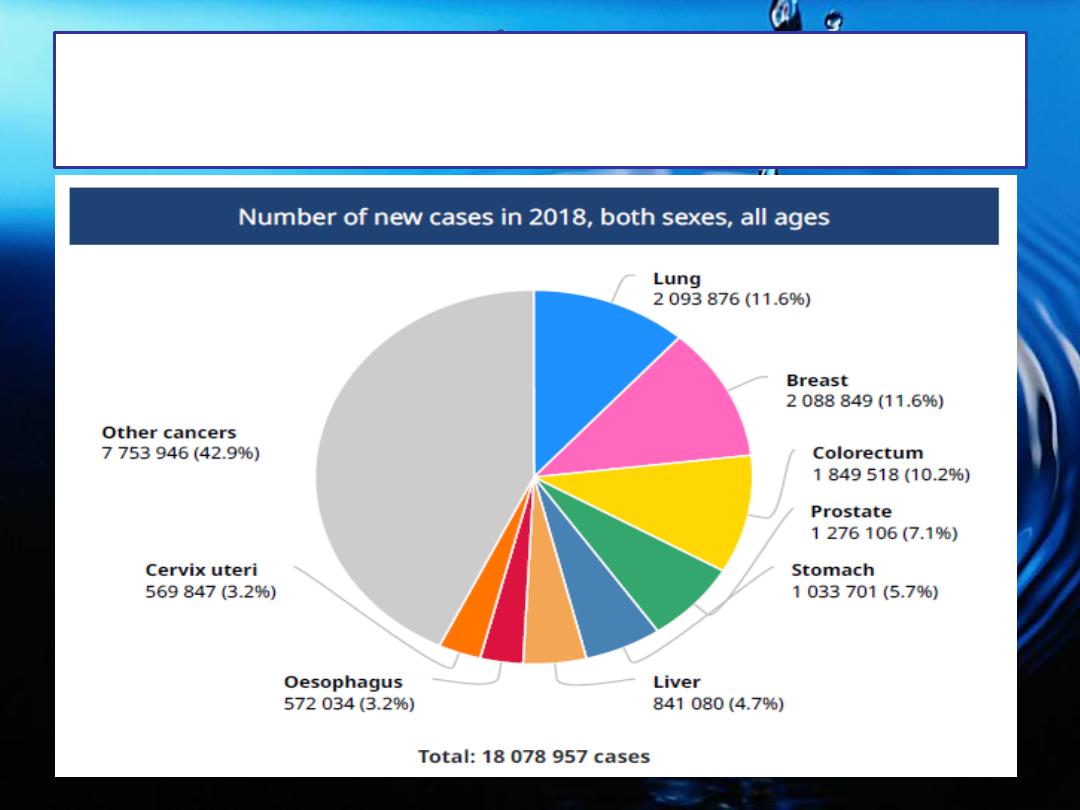
6
All cancers 2018
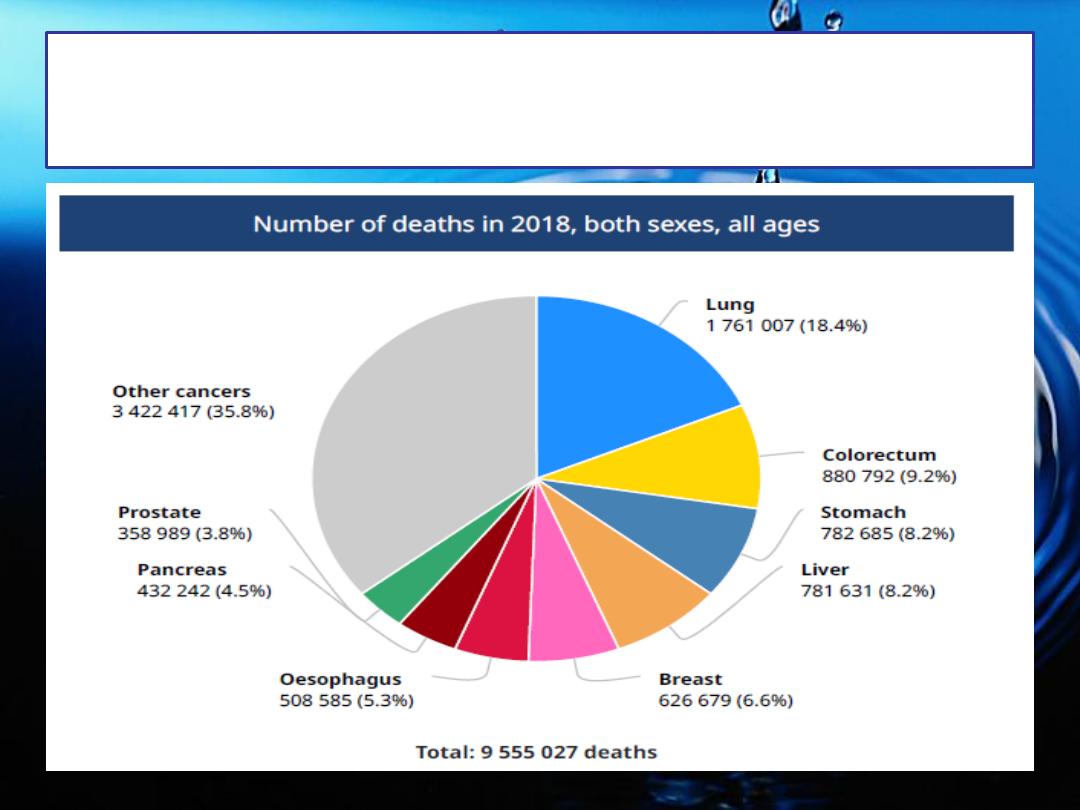
All cancers 2018
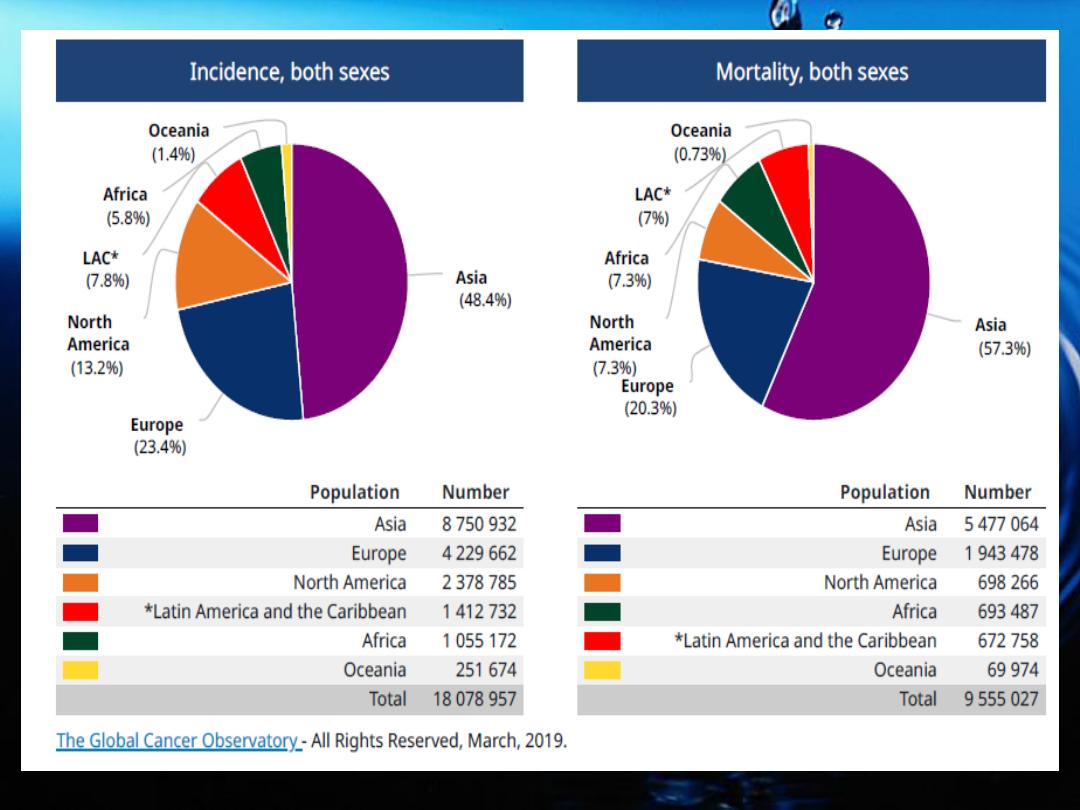

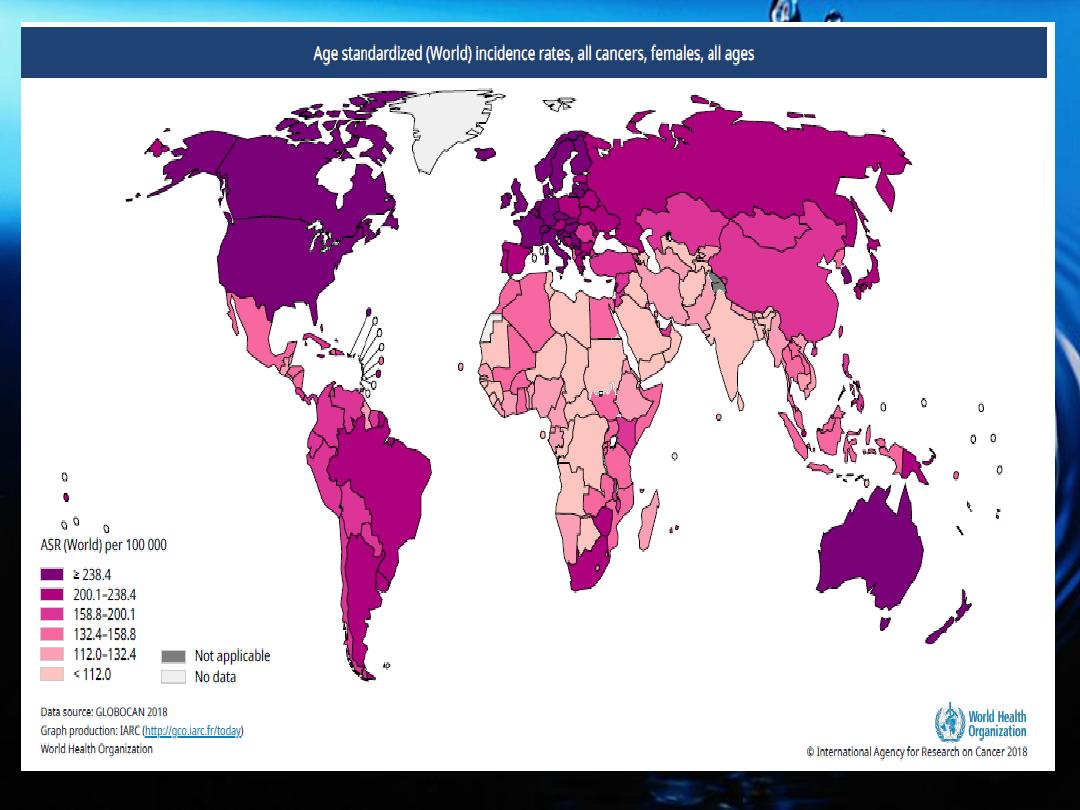

Lung cancer kills more people than any other cancer. A
trend that is expected to continue until 2030, unless
efforts for global tobacco control are greatly intensified.
Some cancers are more common in developed countries:
Prostate, breast and colon.
Liver, stomach and cervical cancer are more common in
developing countries.
The WHO celebrates World Cancer Day each year on
4th February.
Epidemiology

Commonest cancers by site
• I. Lung—Commonest cancer in the
world
among men
• II. Breast—Commonest cancer in the
world
among
women
• Although breast cancer is second in incidence
to lung cancer, it does not cause as much
mortality because once diagnosed, it is
amenable to appropriate interventions, while
lung cancer is often not.
12

Risk factors for cancer
13
• Carcinogens including:
A. Physical carcinogens.
B. Chemical carcinogens.
C. Biological carcinogens.
• Host factors Include:
A. Age.
B. Sex.
C. Other factors.

Agent
A carcinogen is any substance, radionuclide, or radiation that
promotes carcinogenesis, the process of cancer formation. This
may be due to the ability to damage the genome or to the
disruption of cellular metabolic processes.
• Physical carcinogens, such as ultraviolet and ionizing radiation.
• Chemical carcinogens, such as asbestos, components of tobacco
smoke, aflatoxin (a food contaminant) and arsenic (a drinking
water contaminant).

Biological carcinogens, such as infections from
certain viruses, bacteria or parasites; such agents
are responsible for almost 22% of cancer deaths
in the developing world and 6% in industrialized
countries.
Agent
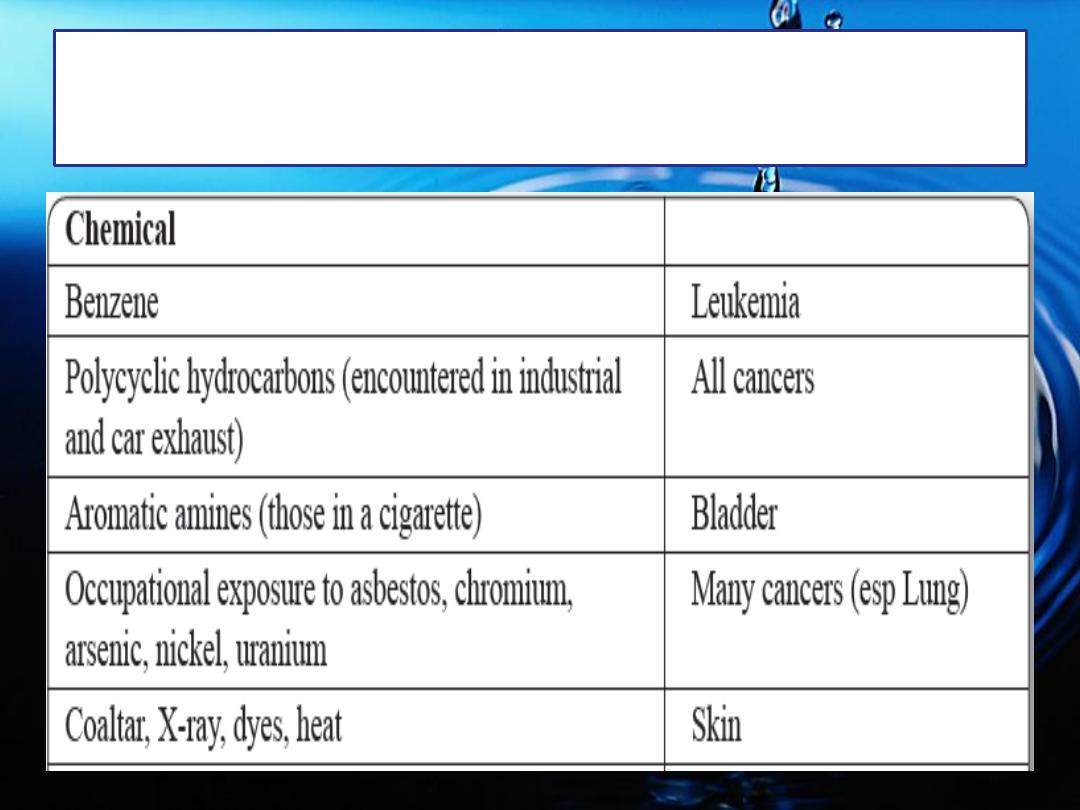
Chemical carcinogen
16

Food
Cancer
Food
Leukoplakia
Ascorbate deficiency
Breast, colon
↑ saturated fat
Oral, esophageal, colorectal
Vitamin A deficiency, Beef, Iron
deficiency
Lung, oral
Tobacco (either in cigarettes or in its
various chewable forms)
Liver
Alcohol
Stomach
Smoked fish (a popular dish in Japan),
nitrosamines (food additive)
Colorectal
Dietary fiber deficiency
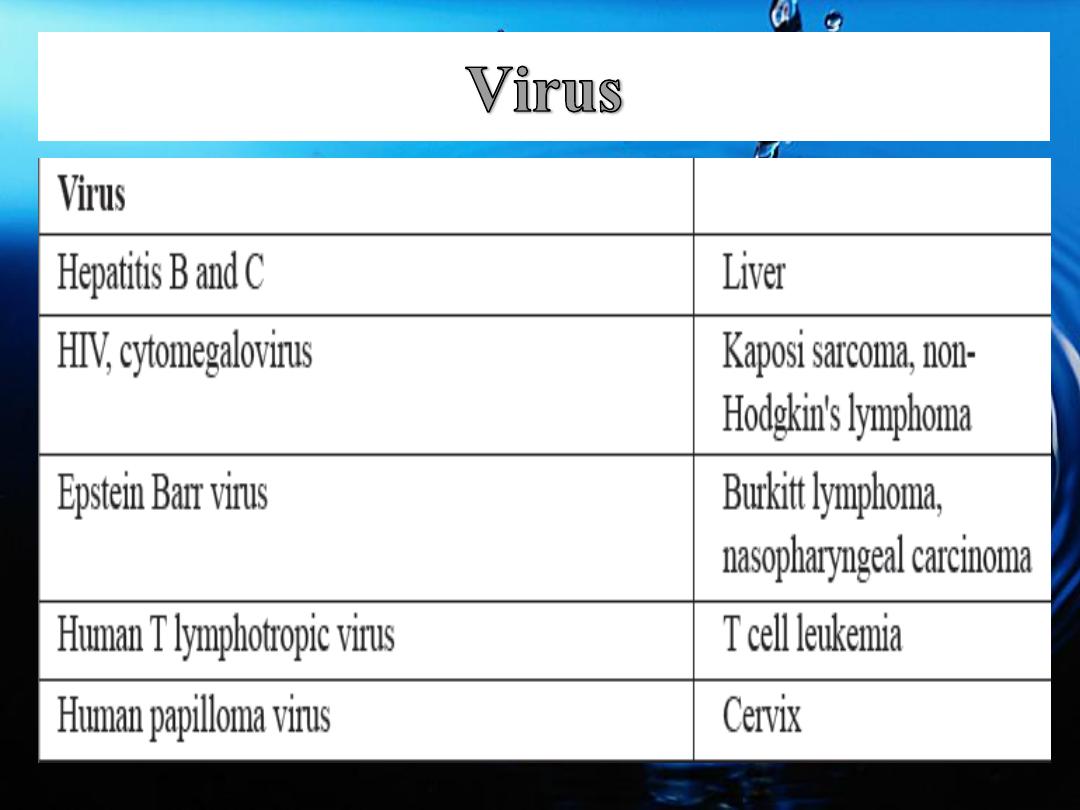
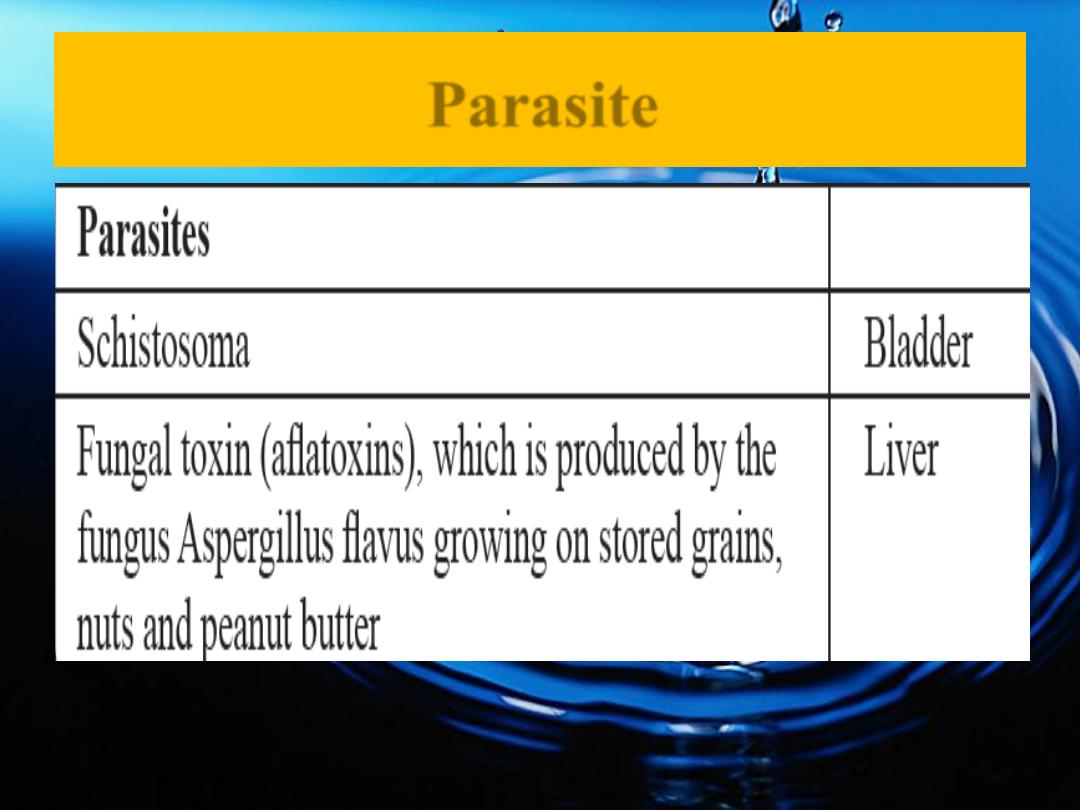
Parasite

Age
Ageing is another fundamental factor for the
development of cancer.
The incidence of cancer rises dramatically with
age, most likely due to a buildup of risks for
specific cancers that increase with age.
The rising incidence of cancer is partly due to
the rise of life expectancy.

It is readily observable that some cancers are
'male' (oral, lung, esophagus, stomach,
bladder) and some 'female' (breast, cervix).
The difference is attributed to exposure (more
men smoke than women) rather than
susceptibility.
Sex

1. Obesity
2. ↓ consumption of fruits and vegetables.
3. Physical inactivity
4. Indoor smoke from household fuels.
Other risk factors
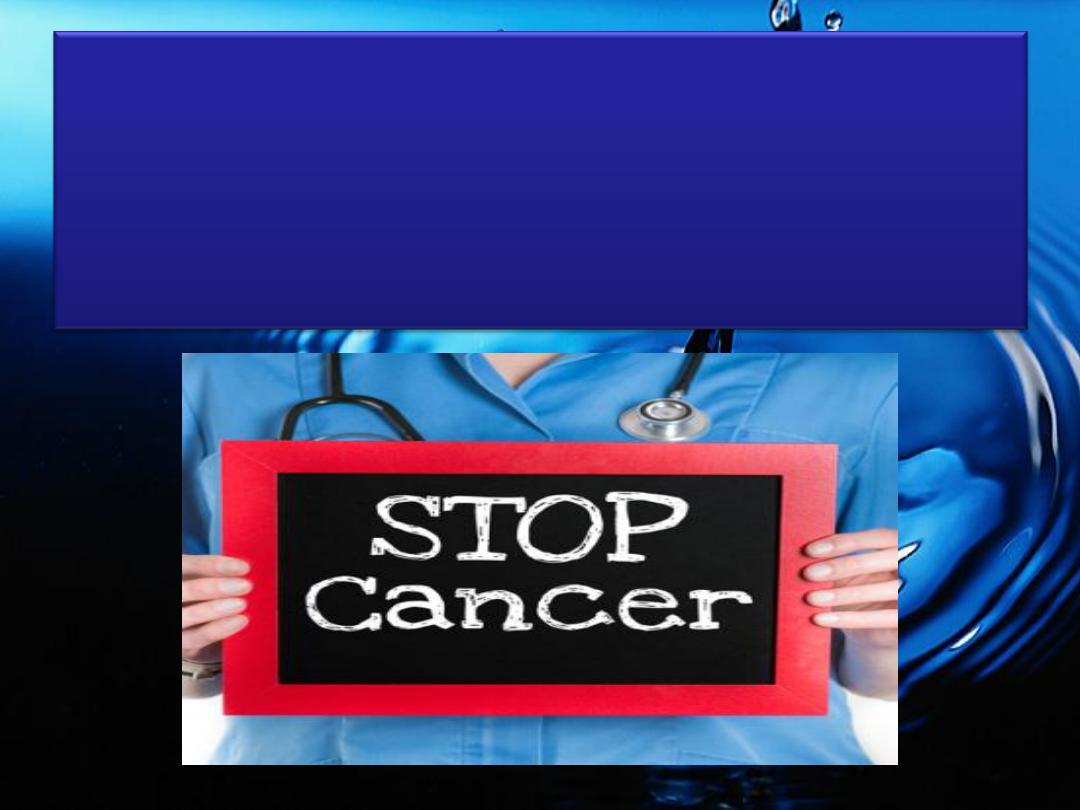
Prevention

1. Control of tobacco and alcohol consumption
by:
A. Education, legislation against smoking,
restriction of smoking in public places.
B. A comprehensive strategy including bans on
tobacco advertising and sponsorship, tax
increases on tobacco products, and cessation
programs.
Primary prevention

2. Maintenance of personal hygiene and being with only
one sexual partner this prevents HPV infection and
carcinoma of cervix.
3. Lessen radiation exposure, esp. reduce un necessary
X-rays done (which exposes both the patient and the
technician to radiation); provide personal protective
equipment to workers in radiation plants.
4. Lessen occupational exposure to carcinogens through
both engineering measures and personal protection.
Primary prevention

5. Immunization—Hepatitis B vaccine and human
papilloma virus vaccine.
6. Legislation and surveillance of food additives, drugs
and cosmetics.
7. Control of air pollution.
8. Treatment of precancerous lesions like cervical tears,
polyposis, genital warts, chronic gastritis, chronic
cervicitis.
Primary prevention

9. Motivate people to recognize 'early signs' of cancer
and seek treatment (‘Cancer education’).
Danger signs include:
•
Lump/hard area in breast.
• Sudden change in a previous mole.
• Persistent cough/hoarseness.
• ↑ menstrual blood loss and blood loss from any natural orifice.
• Swelling/ sore throat that does not heal.
• Unexplained weight loss.
• Persistent change in bowel habit (constipation, diarrhea and
bleeding).
Primary prevention
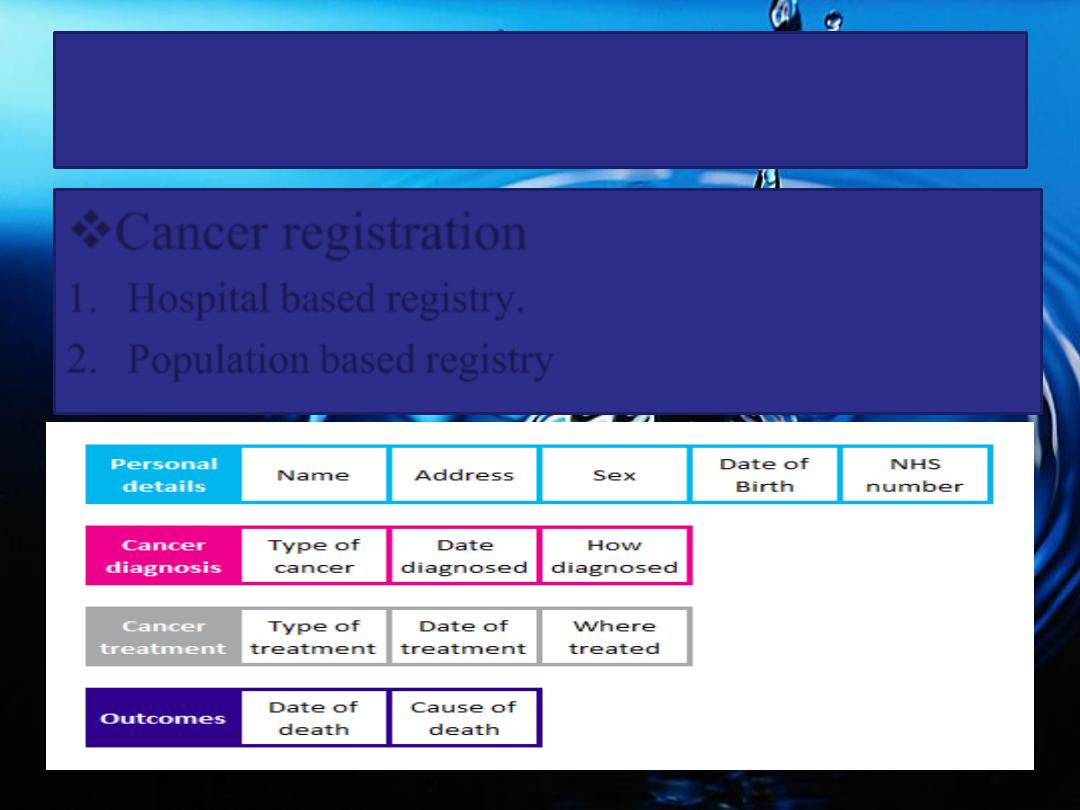
Cancer registration
1. Hospital based registry.
2. Population based registry.
Secondary prevention

Early detection by screening
Cancer screening is possible because
1. Precancerous lesions last for long periods before
developing into cancer.
2. All cancers begin as localized growth before
spreading.
3. Majority of cancer occur at accessible sites (skin and
mucous membranes).
Secondary prevention
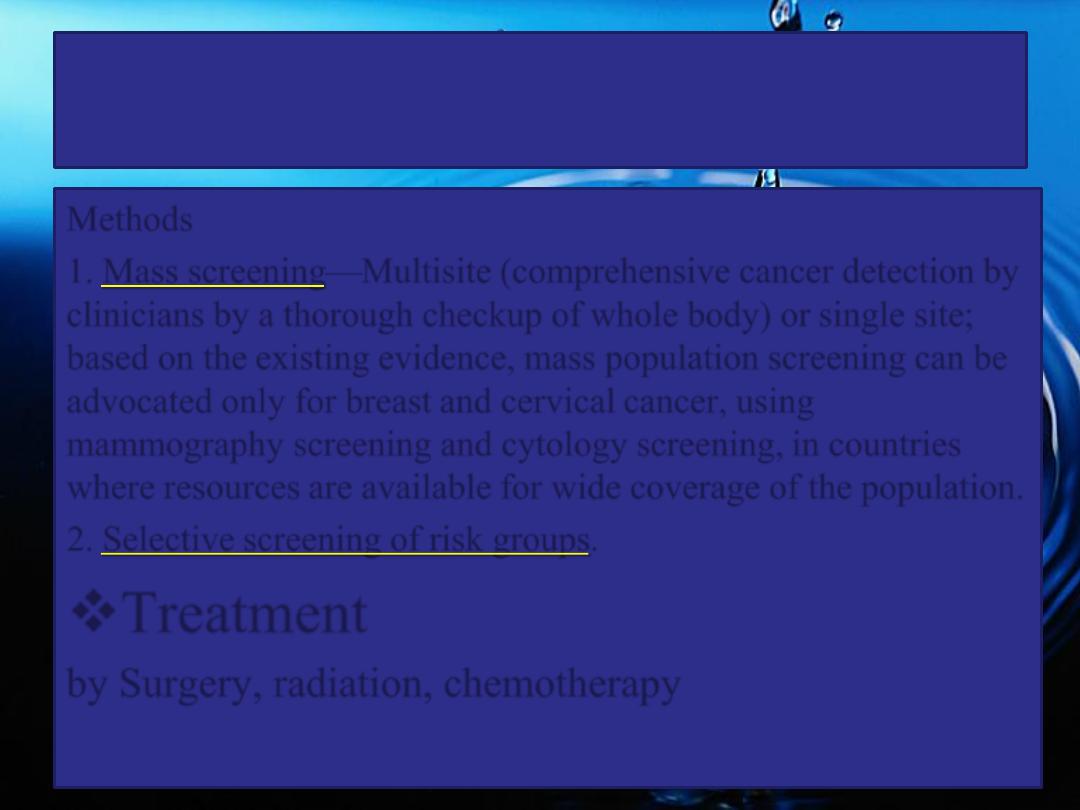
Methods
1. Mass screening—Multisite (comprehensive cancer detection by
clinicians by a thorough checkup of whole body) or single site;
based on the existing evidence, mass population screening can be
advocated only for breast and cervical cancer, using
mammography screening and cytology screening, in countries
where resources are available for wide coverage of the population.
2. Selective screening of risk groups.
Treatment
by Surgery, radiation, chemotherapy
Secondary prevention

1. Analgesia:
Considered the right of the moribund patient.
2. Rehabilitation:
(after amputation/colostomy/facial surgery).
Tertiary prevention

